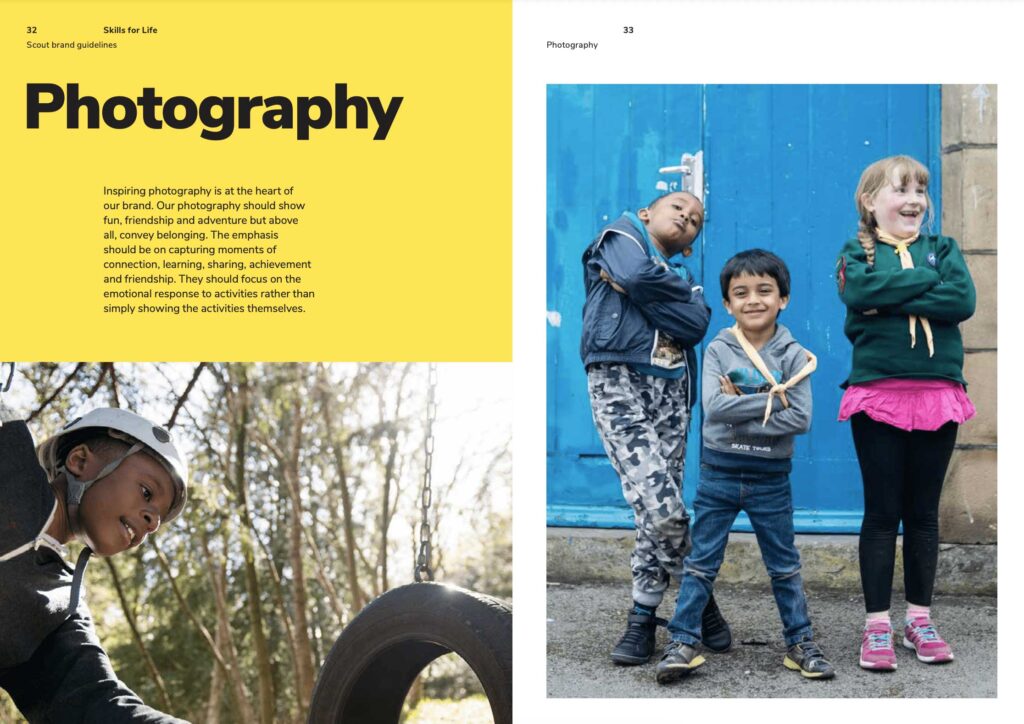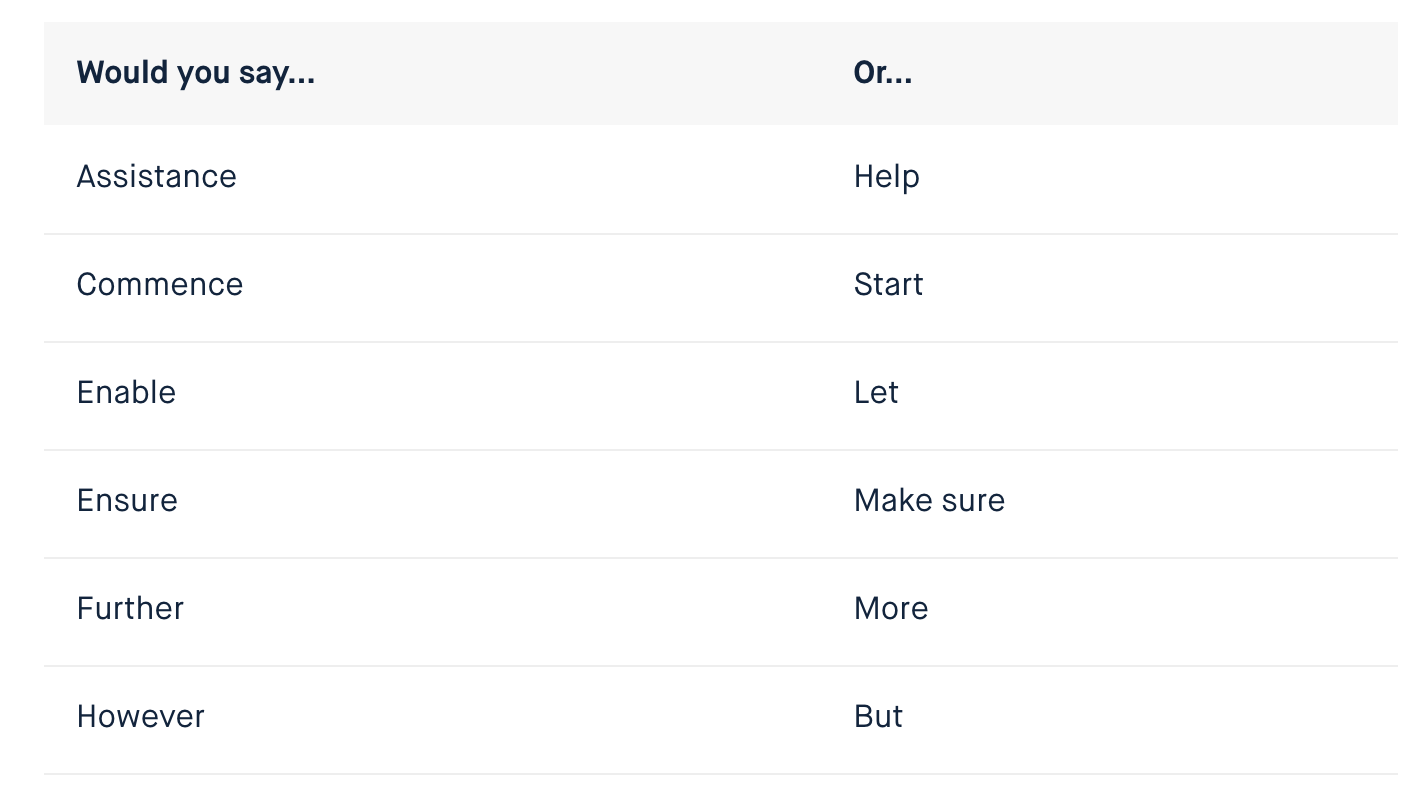A rebrand can do wonders for any business
Chances are your brand has evolved since you started your business. Any change in your business plans can mean that your initial branding strategy is no longer relevant.
Branding that is out-of-date, or doesn’t match what your members or customers actually experience can reflect poorly on your business, and ultimately turn prospective members off.
A rebrand can do wonders for any business, whether it’s a dance studio, football academy, or gymnastics club.
In this article, we discuss when it’s time to rebrand, why change is important, and how you should go about rebranding your club / organisation. We also asked Heidi Swigon, Content Director and Co-Founder of Purmön, a strategic content agency, to share her expert insight and tips on how to successfully rebrand.
What makes a brand?
Your brand is so much more than your logo, colour palette, fonts, imagery, and messaging. It’s your complete brand identity.
This includes your company tone of voice (how your businesses sounds and the way you write), the way you tell your vision, your social media presence, company culture, customer service, images – even the music you choose to play. All these individual decisions feed into your brand, even without you realising.
As well as logos and colours, the Scout Brand Guidelines includes photography style and how the branding should be used across printed material, banners, adverts and more.

When should you rebrand?
If you’re considering making a change to your branding, make sure you’re doing it for the right reasons, not simply because you’re bored of your current look.
Think about the impact you want your new brand to have. If you’re considering rebranding due to low membership sign-ups or brand awareness issues, a tweaked marketing strategy might resolve these, instead of a complete overhaul.
However, if you’re experiencing the following circumstances, a rebrand could be beneficial:
- Opening in a new location
- Target demographic has changed
- New values, mission and company / club vision
- Outdated branding that no longer represents the business
A successful rebrand can take up a lot of time and resources; therefore you need to make sure that it’s the right thing for you before proceeding.
Top tip: Make a list of all the places where your branding appears. For example, your website, merchandise, flyers, social media etc. Doing this early on will give you a sense of how much time / cost will be needed to update everything with your refreshed brand. You can then make an informed decision about whether to proceed with a completely new look and feel, or smaller changes.
This list will also be extremely useful later down the line when it comes to updating your brand (see Step 6 in the rebranding process below).
What does rebranding involve and which approach should you choose?
A rebrand can take a considerable amount of time and resources, so it’s important to get it right from the outset. Choosing the right rebrand approach is therefore crucial.
Here are some of the various types of rebrands and what they involve:
- Copy refresh – quite often, changing the words on your marketing materials is one of the easiest tweaks to make to your branding (especially on digital platforms like your website). Simple things, like swapping negative phrases for positive ones, can have a big difference on how people perceive your brand
- Visual refresh – this involves updating visual parts of your brand without changing the core aspects such as colours or fonts, etc. Similar to copy, photos and images can very easily be changed. For example, you might decide to add pictures of people to your website make your club look more welcoming
- Visual rebrand – this is suitable when you don’t need a complete rebrand, but things need to be tweaked. It allows you to keep the core aspects of your brand but add something fresh and new. For example, you might create a new logo, colour palette, and visual identity but your name and values stay the same
- Complete brand overhaul – this involves changing every aspect of your existing brand. From your name, logo, tone of voice, mission and much more, it’ll create a new brand identity. This is the most time-intensive approach, and will need careful planning to ensure everything is updated

Monzo, the online bank, avoid using formal words so the brand sounds friendly (you can read more about this in Monzo’s tone of voice guidelines). Copy changes like this are a quick and easy update to make to your brand.
The rebranding process
A rebrand is an exciting time for any business or club. Although it might feel like an overwhelming process, it doesn’t have to be. Take yourself through the following steps when rebranding your business / club.
Step 1 – Identify why you need a rebrand
As we mentioned before, it is important to make sure you understand why a rebrand is necessary. A rebrand can take a considerable amount of time, energy and resources; so you need to make sure you have invested for the right reasons.
You should only rebrand when you have identified a core problem with how you currently communicate your brand with your members. This may be that your current brand no longer reflects the direction of your club, you’ve recently moved locations or something similar.
Step 2 – Assess your current branding
Now would be the perfect time to reevaluate your brand’s mission and values. Not sure what your club’s mission and values are? Sitting down and defining them is an excellent practice.
Ask yourself the following three questions to help you identify your mission and values:
- What are we doing? The answer to this question is going to determine your vision and the focus of every decision at your business / club
- How are we doing it? This is going to influence your mission and act as your roadmap. If this evolves then your company message needs to also change with it
- Why are we doing it? This question develops your company values. It allows you to identify why you’re working towards your vision and mission
Any changes in your vision, mission or values need to be reflected in your rebranding. It might only need subtle tweaks or it may need a complete overhaul depending on how much it has progressed over the years.
Step 3 – Carry out research
In order for your rebrand to be a hit, you need to make sure it resonates with your audience and market. Therefore, identifying your target market before you start is important.
Consider and research the following about your audience:
- Age
- Gender
- Location
- Occupation / education
- Economic status
- Interests and hobbies
You’ll be able to find the answers to these questions in your customer database, asking customers to complete surveys, focus groups, and web / social analytics.
Your goal is to determine whether your target market has changed. Your audience could have completely changed in reality, but your branding is still geared towards your original market.
Once you have identified your audience, you need to research your market. Keep in tune with online communities and competitors. Study what they are doing or discussing, trends or new offerings and see if you can replicate them.
Understanding what works and who to target is a game-changer and helps to limit the risk of rebranding.
Step 4 – Establish your USP
What can you do that nobody else can? What do you do differently from your competitors?
Finding your unique selling point (USP) is critical. Your rebrand should shine a spotlight on your USP and what makes you different.
You can identify your USP by doing the following:
- List all the benefits of your service and what makes it unique compared to the competition
- Identify which areas can not be replicated or copied
- Define what is in it for the customer and what emotional needs your service provides them with
This information can help to provide some clarity during your rebranding process.
Step 5 – Establish roles and responsibilities
If you haven’t already, now is a good time to determine who will be involved in the rebrand process. This is especially important if your organisation has a committee, or multiple people will need to approve the new brand.
Design can be subjective. Or to put in another way, it’s easy for people to give an opinion based on their own personal likes and dislikes. While feedback is valuable, ultimately you want to act upon the research and information gathered up to this point, and not just go with your favourite colour!
Write down the names of people who need to be involved throughout the process. Then decide:
- Who is ultimately responsible for approving / signing-off the brand
- Who’s opinion will be valuable but they might not have the final say
- Who will manage the process – this person will act as a project manager and help keep everyone informed, including third parties like a designer
Step 6 – Start the redesign
This is the step where things actually start to take shape. It’s important that during this stage you identify all the areas that need redesigning. This will vary depending on which type of rebrand you opt for.
Think of all the touchpoints your customers / members have with your business. You need to list every physical and digital component that needs to be updated. This could include things such as logos, invoices, social media bios, email signatures, branded kit / merchandise, staff uniform, and much more.
Download our rebranding checklist to make sure don’t miss out on any important touchpoints.
Depending on the amount of work needed doing and the skillsets you have, you may decide to outsource this step.
A skilled designer will be able to help with:
- Logo – as a general rule, your logo needs to be simple, memorable and appropriate for your market. You also need to make sure that it can be easily adapted across various channels such as websites, social and print
- Colour palette – your colour scheme should consist of three colours: base, accent and neutral. The base colour can represent your brand’s personality. The accent colour needs to work cohesively with the base and the neutral colour needs to work as a complementary background hue. Online colour palette generator Coolors is a great tool to get you started
- Typography – just like your colour palettes, the fonts you use need to match your brand’s personality while also being easy to read. We recommend choosing two fonts – one for headlines / title and another for body copy (paragraphs etc)
- Imagery – a picture says a thousand words, so it’s important to choose images that support the core message and vision of your brand. You also need to make sure that images appeal to your target market
For those wanting to take on the challenge themselves, Canva is a free graphic design platform that can be used to create a wide range of designs. At the click of a button, you can create custom logos, social media graphics, and much more.
Top tip: Colours can convey a lot of meaning. For example, white is often associated with purity and serenity, while orange is energetic.
When it comes to choosing your colour palette, it can be helpful to look at similar clubs in your sector and see which colours they have chosen.

The Army Cadets have used dark grey and green on their website. These colours bring to mind feelings of power, stateliness, outdoors and nature – things you would probably associate with the organisation.
The Duke of Edinburgh Award and the Scouts, on the other hand, have chosen vibrant shades of purple. Vibrant shades are common for brands aimed at children. However, purple is often associated with luxury and authenticity. By going with a less obvious choice, the organisations stand out.
Step 7 – It’s time to launch
Before jumping into the deep end, it’s important to make sure you have everything in place and ready to go.
We recommend the following plan:
Create a list of everyone who needs to know
This is known as a soft launch. It is important to make sure you inform your internal audience first to help maintain relationships. It allows you to get everyone on board and for everyone to stay informed. A soft launch is also a great way of ironing out any kinks and issues before going public.
Building upon the list you created earlier in the process, identify any additional internal or external stakeholders who need to be informed of your rebrand. These could include:
- Board members
- Donors
- Sponsors
- Employees
- Customers
- Community
- Media
Create a narrative
Now that your audience is set in stone, you need to make sure you unveil all your hard work in a way that tells the story. Tell them the reason behind your choice to rebrand, the thinking behind the new look and what this means for your business going forward.
A compelling story helps to add a human element to your business, connecting your audience with the rebrand.
Build anticipation
Let your audience know that something new is coming, and build the hype. One quick and easy way to bring anticipation to your rebrand efforts is to have a countdown calendar. Offer sneak peeks the closer you get to relaunch day and allow discussions to be had.
Communicate effectively
The next big step is to identify when to communicate with your audience and at what time.
A communication plan is a great way to effectively communicate with key internal and external stakeholders. It works as a timeline and plan, enabling you to visualise who, what, when and via which channel you need to communicate.
Learn how to create a communication plan and download your free template.
How can LoveAdmin help you successfully rebrand?
You can count on LoveAdmin to be your dedicated partner every step of the way. We’re here to help you, from showcasing your new branding in your bespoke online shop to communicating and building buzz through compelling email campaigns.
Our software reduces your administrative headache so you can spend more time improving your branding and member experience.
Some of our powerful club management software features are:
- Schedule rebranding email campaigns ahead of time
- Our in-house design team will create an online personalised shop featuring your new branding
- Build relationships between products so when a member renews their membership they are required to purchase the rebranded kit/merchandise
- Everything you need to run your business in one secure online place
Want to know more about how our software can help streamline your club admin? Book your FREE demo.
A big thank you to Heidi from Purmön for sharing with us her expert advice on how to successfully rebrand your club.
















